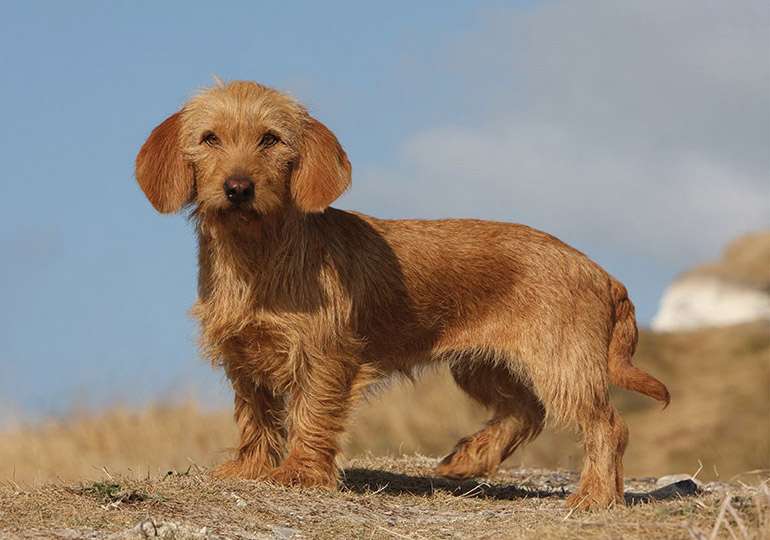
Morphological Characteristics
Large French mastiffs like the Dogue de Bordeaux are a breed. The Bordeaux is a typical brachycephalic mastiff breed and a highly strong, muscular dog. This powerful breed has been used for flock protection, moving big things, and hauling wagons. The Dogue de Bordeaux has a robust frame and is a well-balanced, large, and muscular dog. The depth of the chest is slightly less than the distance from its deepest point to the ground. An essential trait of the breed is a large head with ideal proportions and characteristics. The breed is not as tall as the English Mastiff and is rather low to the ground.
The Dogue de Bordeaux has a thick-set body, a slightly dipped topline (the topline is never totally straight), and a softly rounded croup. The front legs should be heavy-boned, straight, and extend all the way down to the narrow, cat-like feet. The straight tail should not extend lower than the hocks and is carried low. It is thick at the base and tapers to a point at the end.
Care as a Pet/ In Captivity
Feeding
Each day, they eat 6 to 10 cups of dry food. Mastiffs will need 2.5-7 pounds of muscle meat, organ meat, and bones each day if opting for a raw diet. Senior dogs will need less food, whereas growing puppies and nursing mothers would consume more.

Grooming
The dogue de Bordeaux has a soft-haired, extremely short coat that doesn’t need any maintenance. For coat maintenance, sporadic usage of a grooming mitt or glove should be adequate.
To prevent discomfort and infection, the dogue’s many skin folds do need periodic cleaning. Due to its enormous size, it is best to develop a grooming practice early on so your dog becomes accustomed to it. Regular tooth brushing—preferably daily—will help the dogue avoid dental disease. Even though the dogue’s nails could naturally deteriorate, inspect them frequently and cut the nails as necessary. Ideally, your dog only has to be bathed a few times a year.
Training
This large dog can become completely unmanageable if it isn’t trained. After receiving a dogue, a strict workout regimen should be put in place as soon as possible. Socialization plays a similar role. This is partly caused by the breed’s enormous stature.
Exercise
The dogue de Bordeaux needs a suitable outlet for its average amount of energy given its size. Along with training, it’s crucial to get enough exercise, such as one lengthy walk or several shorter ones that add up to roughly 45 minutes each day. Don’t overdo it, though, as this huge breed dog may be prone to orthopedic issues. Take the dog for a stroll at a leisurely, not brisk, pace.
Table





